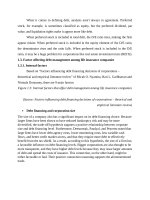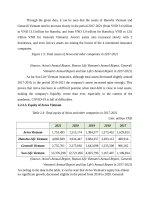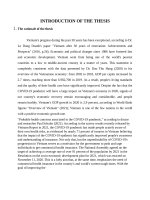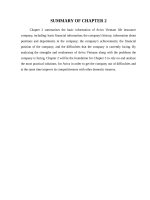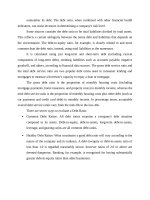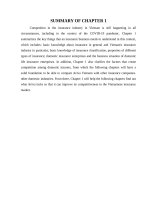What i have studied from school 0020
Bạn đang xem bản rút gọn của tài liệu. Xem và tải ngay bản đầy đủ của tài liệu tại đây (36.16 KB, 1 trang )
When it comes to defining debt, analysts aren't always in agreement. Preferred
stock, for example, is sometimes classified as equity, but the preferred dividend, par
value, and liquidation rights make it appear more like debt.
When preferred stock is included in total debt, the D/E ratio rises, making the firm
appear riskier. When preferred stock is included in the equity element of the D/E ratio,
the denominator rises and the ratio falls. When preferred stock is included in the D/E
ratio, it may be a huge problem for corporations like real estate investment trusts (REITs).
1.3. Factor affecting debt management among life insurance companies
1.3.1. Internal factors
Based on “Factors influencing debt financing decisions of corporations –
theoretical and empirical literature review” of Micah O. Nyamita, Hari L. Garbharran and
Nirmala Dorasamy, there are 9 main factors:
Figure 1.3: Internal factors that affect debt management among life insurance companies
(Source: Factors influencing debt financing decisions of corporations – theorical and
empirical literature review)
•
Debt financing and corporation size
The size of a company also has a significant impact on its debt financing choice. Because
larger firms have been shown to have reduced bankruptcy risk and may be more
diversified, the trade-off hypothesis supports a positive relationship between corporate
size and debt financing level. Furthermore, Deesomsak, Paudyal, and Pescetto stated that
large firms have lower debt agency costs, lower monitoring costs, less variable cash
flows, and better credit market access, and that they require more debt to effectively
benefit from the tax shield. As a result, according to this hypothesis, the size of a firm has
a favorable influence on debt financing levels. Bigger corporations are also thought to be
more transparent, and they have higher debt levels because they may issue larger amounts
of debt and spread the costs of issuance. This connection, on the other hand, might be
either favorable or bad. Their positive connection reasoning supports the aforementioned
trade-
